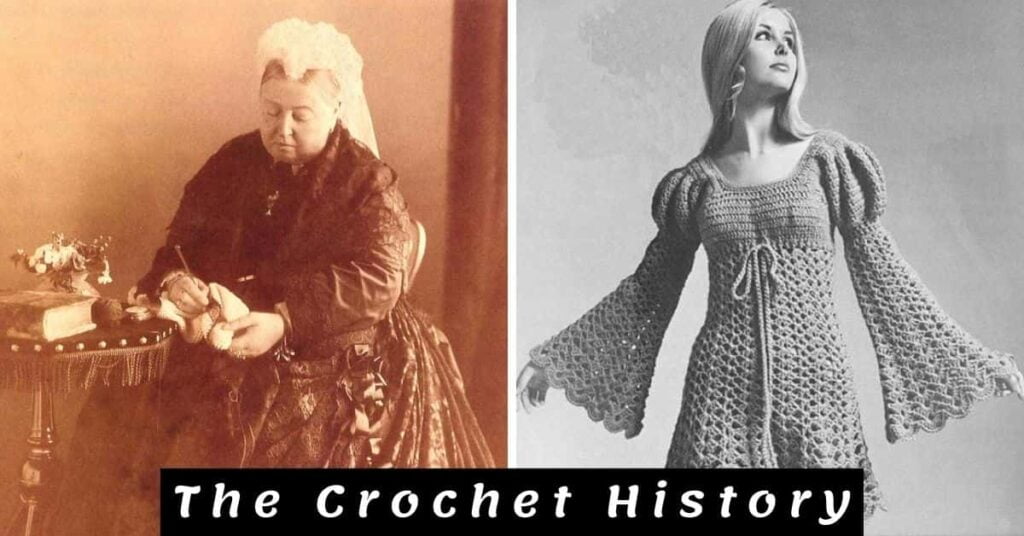已知最早的钩织图案是在1824年印刷的,但有大量证据表明,特别是妇女从那时起就开始记录和分享钩织图案。
See_also: 9位重要的斯拉夫神明和女神 虽然钩织的确切起源并不清楚,因为这种技能最初是口口相传的,但Lis Paludan推测钩织是由伊朗、南美或中国的传统做法演变而来,但没有决定性的证据表明这种工艺在19世纪在欧洲流行之前就已经进行了。
推荐文章
什么是钩织
钩编是一个过程,通过这个过程,纱线或线和任何大小的单钩可以用来制作织物、花边、服装和玩具。 钩编也可以用来制作帽子、包和珠宝。
我们在英语中所说的钩织是由法语单词 "Crochet "衍生而来。 钩针 这句话的字面意思是 上钩 和针织一样,钩针也是通过将纱线拉过一个活动圈来完成的。 针织涉及一排开放的活动圈(或针),而钩针的过程一次只使用一个圈或针。 通过改变张力、落针和加针,以及在缝合时将纱线缠绕在钩上,可以创造出各种纹理、图案和形状。
钩织的材料是没有限制的。 纵观历史,世界各地的人们都使用过线、羊毛、纱、草、绳、线、丝;甚至牙线和头发都被钩织过。
Ruthie Marks的一篇文章指出:"研究表明,钩针可能最直接地从中国的针线活发展而来,这是一种非常古老的刺绣形式,在土耳其、印度、波斯和北非都有,在1700年代传到欧洲,被称为 "tambouring",来自法语的 "tambour "或鼓。 在18世纪末,tambour演变为法国人所说的"空中钩编",即丢弃背景织物,自行编织针迹。
分享钩织的艺术
在很长一段时间里,钩织技术是在朋友和家人之间口头分享的;针法和图案是直接从原作上复制的。 这导致了钩织的高度不准确,而且一件物品被复制的次数越多,就越偏离原作。
从这种做法演变而来的是一个简单的想法,即特定的针法可以通过制作一个小样本来学习和分享,并作为每个家庭的主要参考。 针法样本最终被制作出来,然后缝在纸屑上,做成一种软书,可以在妇女的圈子里传递。 在她的旅行中,作者安妮-波特发现了一些这些剪贴簿--始于19世纪末--仍由西班牙的修女使用。
最新文章
第一批印刷的钩织图案是在1824年,通常是金银丝线的钱包的豪华图案。 这些早期的图案,往往不准确,会让现代的钩织者发疯。 例如,一个八角星,可能变成只有六个点。 事实证明,读者被期望阅读图案,但使用插图作为更多的准确的指南。这些图案仍然依赖于读者从原始图像上复制。 它在很大程度上依赖于钩针的直觉和阅读图案和图片。
钩编在19世纪初开始在欧洲出现,并由Riego de la Branchardiere女士带来了巨大的推动力,她最著名的能力是将旧式的针和摇篮花边设计变成可以轻易复制的钩编图案。 她出版了许多图案书,使数百万妇女可以开始复制她的设计。 Riego女士还声称发明了 "花边式 "钩编,"今天称为爱尔兰钩编。
另一种收集针法样本的方法是将不同的针法编织成狭长的带子--有些是成年人做的,有些是在学校开始的,多年来一直在补充。
从1900年到1930年,妇女们还忙于钩织阿富汗毯、睡毯、旅行毯、躺椅毯、雪橇毯、汽车毯、靠垫、咖啡壶和茶壶套以及热水瓶套。 正是在这一时期,锅垫首次出现,并成为钩织者的主食。 正是在这一时期,许多类型的纱线也附带小图案样本。和钩织指南。
钩织在20世纪60年代的崛起
See_also: 亚历山大-塞维鲁 在20世纪60年代和70年代,钩编作为一种自由的表达方式开始兴起,今天可以在三维雕塑、衣服或描绘抽象和现实设计和场景的地毯和挂毯上看到。
探索更多文章
现代的钩织图案已经变得非常详细复杂,你可以从流行的钩织图案网站Crochet Universe上看到,那里有钩织图案,可以钩出你自己的伊丽莎白-班奈特、弗里达-卡洛或可可-香奈儿。
参考文献
"一个活生生的谜,国际艺术& 钩织的历史,"
安妮-路易斯-波特,A.J.国际出版公司,1990年
钩织宇宙,凯瑟琳-布鲁斯特 2014年

James Miller
James Miller is an acclaimed historian and author with a passion for exploring the vast tapestry of human history. With a degree in History from a prestigious university, James has spent the majority of his career delving into the annals of the past, eagerly uncovering the stories that have shaped our world. His insatiable curiosity and deep appreciation for diverse cultures have taken him to countless archaeological sites, ancient ruins, and libraries across the globe. Combining meticulous research with a captivating writing style, James has a unique ability to transport readers through time. James' blog, The History of the World, showcases his expertise in a wide range of topics, from the grand narratives of civilizations to the untold stories of individuals who have left their mark on history. His blog serves as a virtual hub for history enthusiasts, where they can immerse themselves in thrilling accounts of wars, revolutions, scientific discoveries, and cultural revolutions.Beyond his blog, James has also authored several acclaimed books, including From Civilizations to Empires: Unveiling the Rise and Fall of Ancient Powers and Unsung Heroes: The Forgotten Figures Who Changed History. With an engaging and accessible writing style, he has successfully brought history to life for readers of all backgrounds and ages.James' passion for history extends beyond the writtenword. He regularly participates in academic conferences, where he shares his research and engages in thought-provoking discussions with fellow historians. Recognized for his expertise, James has also been featured as a guest speaker on various podcasts and radio shows, further spreading his love for the subject.When he's not immersed in his historical investigations, James can be found exploring art galleries, hiking in picturesque landscapes, or indulging in culinary delights from different corners of the globe. He firmly believes that understanding the history of our world enriches our present, and he strives to ignite that same curiosity and appreciation in others through his captivating blog.



